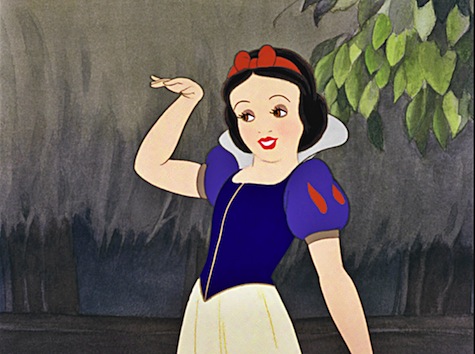The Internet is abuzz over Neil Gaiman’s newest children’s book, The Sleeper and the Spindle, in which “a sort-of Snow White” rescues “an almost Sleeping Beauty” from her enchanted sleep with a kiss. Yet that boundary-busting kiss is just the bookend to an adventure that sees the raven-haired Snow trading her wedding dress for chain mail and racing through tunnels to get to the imprisoned Princess.
Sounds pretty rad, right? Well, it’s not pop culture’s first instance of Ready-for-Action Snow White—not by far. Mirror, mirror, on the wall, why is Snow White the most reimagined of them all? Because, when you boil it down, she has no personality—you can project anything you want onto her.
Try and list the personality traits of Disney’s Snow White. She… has a breathy voice and sings simpering songs about birds? She giggles and stumbles and can’t quite keep herself standing upright? She’s basically a human doormat, cleaning for dwarves and accepting poisoned apples from strangers? Her TV Tropes page doesn’t do her any favors, either.
The following seven reinventions of Snow White have more in common with each other than with their Disney predecessor: They’re all more ambitious, more empathetic, and better with a weapon than that oblivious princess above. Here’s how they were all built on the same blank foundation.
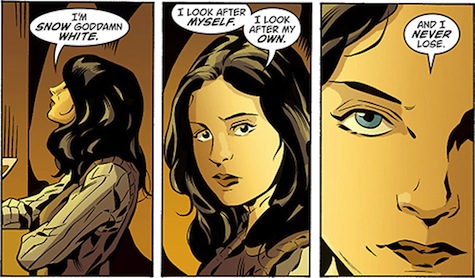
When we first meet Snow, one of the main protagonists of Bill Willingham’s Fables series, she’s the deputy mayor of Fabletown and a bit of an ice queen. Cold and calculating, she’ll often put her own ambitions before her fellow Fables. Interestingly, she seems much more like Once Upon a Time‘s sympathetic villain Regina than that series’ version of Snow (who you’ll meet later in this post).
Even once we’re given flashbacks into her past, it’s difficult to level with the aristocrat-turned-bureaucrat. That said, the one character who makes her seem more human is (ironically) Bigby Wolf; their romance is the kind of thing you would never have imagined for Snow White, yet it brings the most nuance to her character.
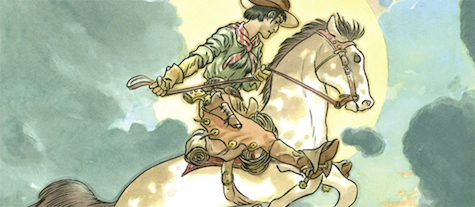
Catherynne M. Valente’s version of Snow is anything but a princess looking for her castle; the daughter of a silver baron and a Crow woman, this young woman spends life tormented by her father’s new wife, who believes that all the abuse she enacts on the girl will make her better and purer. It’s a story in which the burdens of sexism and racism are felt keenly. Snow White leaves her home, taking guns and a horse named Charming on her journey. Eventually she finds a community of seven outlaw women, where she finally feels at home. The story is still a tragic one, but there is no doubting the incredible strength of this woman, or courage her journey requires.
Once Upon a Time
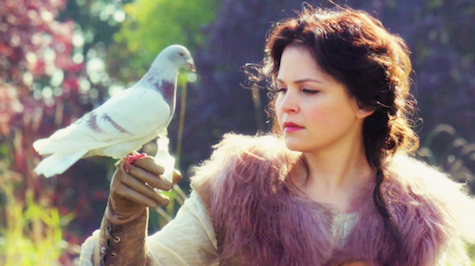
Once Upon A Time manages to due something truly impressive. It takes the hallmarks of Snow White’s character as she generally perceived—sweetness, optimism, a forgiving and nurturing nature—and manages to infuse that into a woman who is still strong, opinionated, and commanding. This wouldn’t be quite so notable if it weren’t for the fact that this level of complexity is rare for female characters, on television and otherwise. Mary Margaret is incomparably kind and gentle, but she also fires a bow and arrow as well as Robin Hood. She fights a rebellion against evil, she believes that good will triumph, that her love is stronger than anything. It is exciting to find an incarnation of the princess who manages to take every aspect of femininity that people often deem as “weaknesses” and turn them all into strengths.
Mirror, Mirror
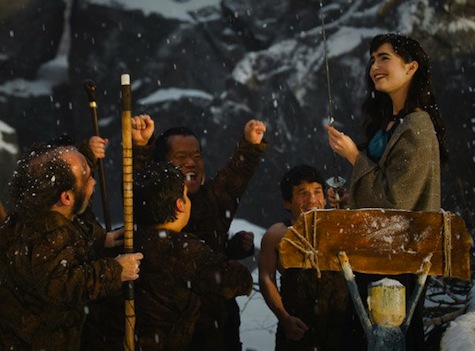
Even in the sillier of 2012’s two dueling Snow White movies, the princess turns from sweet recluse into master swordswoman, thanks to a training montage led by seven dwarven bandits. She even goes so far as to (on separate occasions) tie up and free the prince her evil stepmother is trying to seduce.
Yet, it’s not as if there’s anything in Snow’s personality where you automatically think, “Oh yes, she’s meant to be a mini female Zorro.” In some ways, she imprints on the dwarvs like a little duckling. You have to wonder, if she had stumbled upon a band of gypsies or a sewing circle of other sweetly dumb princesses, if she would have turned into someone else.
Snow White and the Huntsman
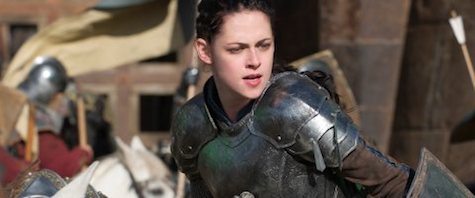
Snow White leads an army in this one, and she has the distinction of getting to defeat the evil queen stepmother in an actual one-on-one battle. Trapped as a girl in a tower alone, Snow manages to escape when the queen finds out that her stepdaughter’s beauty will soon spell the end of her immortality. She’s been bleeding their land dry, sucking the youth out of all beautiful women within carriage ride distance.
Luckily, Snow turns out to be a harbinger of life, bringing out the classic white stag in the forest and everything. Her mother wished for her, causing a slightly magical birth, if you will. She makes friends everywhere she goes, too—this time, the love of her life turns out to be the huntsman instead of some noble prince. A fun tossup from the usual.

A “thread of dark magic” connects Snow White and Sleeping Beauty in Gaiman’s new book (illustrated by Chris Riddell). Here’s a more detailed synopsis:
On the eve of her wedding, a young queen sets out to rescue a princess from an enchantment. She casts aside her fine wedding clothes, takes her chain mail and her sword and follows her brave dwarf retainers into the tunnels under the mountain towards the sleeping kingdom. This queen will decide her own future—and the princess who needs rescuing is not quite what she seems.
Obviously, LGBTQ themes in Gaiman’s work is nothing new—but it is impressive that they exist in a book aimed toward younger readers. Suran Dickson, the CEO of Diversity Role Models, praised the book for showing “love to be the most important aspect of a relationship.”
A rep for Bloomsbury told Gay Star News, “While it is not a gay story in itself there is much to be said about having a female kiss not only described but illustrated in a book for young readers.”
It’s so fitting that you have to wonder why no one thought about it sooner. Who better to bring a princess back to life than a queen who was (if we’re following the Snow White canon) herself revived with true love’s kiss? It’s paying it forward, in some weird, perfect way.
Winter
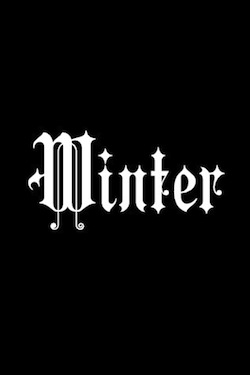 The fourth and final book of Marissa Meyer’s Lunar Chronicles series is named for Princess Winter, stepdaughter of the evil Lunar Queen Levana and stepsister to the cyborg Cinder (who, you may have guessed, is a modern Cinderella). Winter is loosely based on Snow White, and from what we’ve heard about the book (out November 2015), she’ll be a little… out of sorts.
The fourth and final book of Marissa Meyer’s Lunar Chronicles series is named for Princess Winter, stepdaughter of the evil Lunar Queen Levana and stepsister to the cyborg Cinder (who, you may have guessed, is a modern Cinderella). Winter is loosely based on Snow White, and from what we’ve heard about the book (out November 2015), she’ll be a little… out of sorts.
For the past five years, the 17-year-old Winter has fought the temptation to abuse her special Lunar powers. But that resistance, Meyer explained, has caused her mind to slowly deteriorate. Where the most recent book Cress leaves off, the deranged princess has imprisoned Scarlet (Little Red Riding Hood) in a zoo-like enclosure as her human pet. She says she’s on Scarlet’s side, but we won’t know for sure until the book comes out.
Bureaucrat, Outlaw, Purveyor of Hope, Bandit, Knight, Rescuer, Lunar Princess… Who needs the seven dwarves when you’ve got this many variations on Snow White?
Natalie Zutter writes plays about superheroes and sex robots, articles about celebrity conspiracy theories, and Tumblr rants about fandom. You can find her commenting on pop culture and giggling over Internet memes on Twitter.
Emmet Asher-Perrin always hated Disney’s Snow White, and is happy to see so many new incarnations pop up to change her mind. You can bug her on Twitter and read more of her work here and elsewhere.










